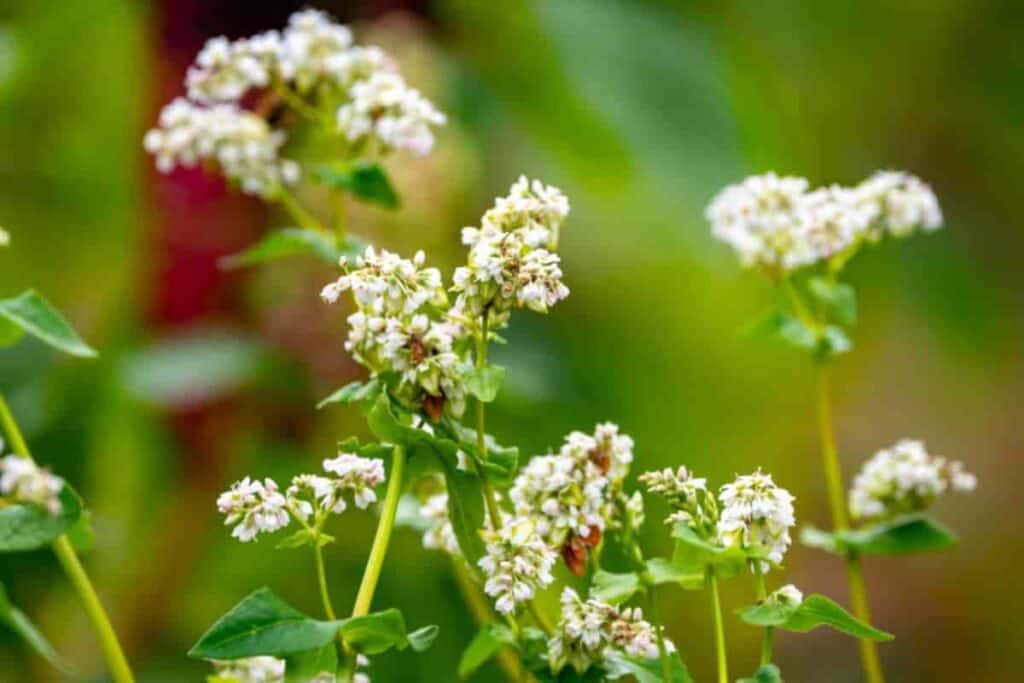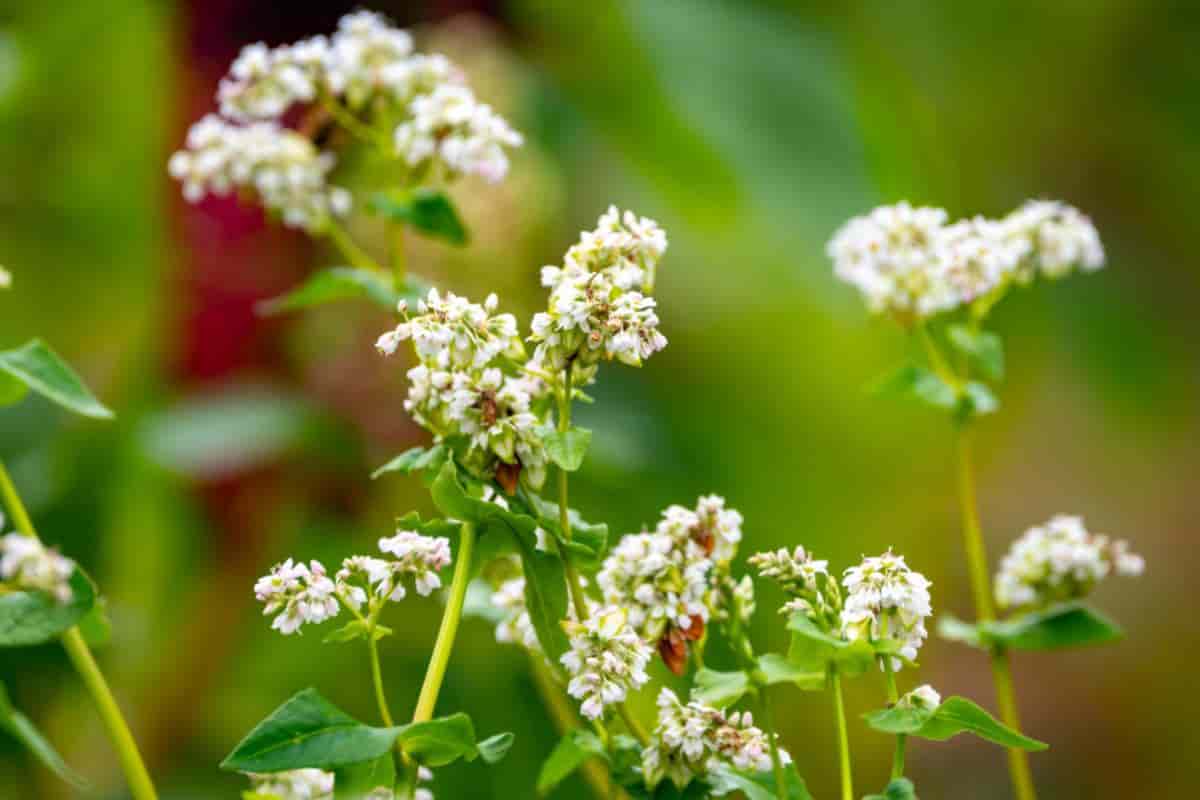There is no closed season on good soil improvement practices for the gardener who wants the best from his land.

True, in most places, the frozen ground of winter puts an end to his actual labors, but if he is provident, not before he has planted cover crops in the fall to work for him throughout the cold months.
Benefits of Green Manures
Perhaps a better description of crops planted just to prepare the soil is not “cover crops” but “green manures” for these crops to do everything that manure does at less cost and with no greater expenditure of effort.
Green manures add organic matter to the soil without the need for composting.
They are planted, turned under, and, in time, break down into humus that provide nourishment, help soil hold moisture, and support bacteria and earthworms.
Improving Soil With Green Manures
Moreover, green manures improve the physical condition of the land by adding substance to light, sandy soils and porosity to heavy, clay soils.
And, by keeping land in vegetation, possible erosion, often fatal to it, is checked, and any fertilizer remaining in the soil is caught and prevented from leaching.
Incidentally, it has been found that without adequate organic matter in the soil, fertilizers, those that come in bags, are not always fully effective.
The magic formula that produces the all-around bountiful soil every gardener wants is organic matter, fertilizer, and, if necessary, lime.
Planting and Growing Green Manures
Green manures are often planted after cultivated food crops, perhaps between the rows just before harvest. Seeds may be raked into the ground by hand, but mechanical assistance lightens the labor.
Roto-milling or roto-tilling shallowly after the seed is sown covers it. With the conventional type machine, the cultivator attachment may be used for planting the cover crop.
Some commercial fertilizer spread thinly over the ground when planting green manures brings rich returns in more abundant growth for them and, therefore, a greater quantity of more succulent organic matter to improve the soil.
The fertilizer used thus is later returned to the food crops, for the chemical nitrogen applied is transformed into organic nitrogen for future use.
Using fertilizer in raising green manures has proven so advantageous that one of the biggest growers of vegetables for freezing, the famous Seabrook Farms of New Jersey, is reportedly putting its main fertilizer application into the green manures, which are grown at every opportunity.
Choosing The Right Green Manure
When to turn the improvement crop under at the right time depends on the need for the ground sown with green manures and the gardener’s ability to raise and get into the soil a heavy crop.
It isn’t as practical for him, who depends on hand tools and light machinery to allow crops to grow near maturity, as for the farmer with heavy equipment.
The right time for the home gardener to plow his cover crop under is probably when it is a foot or so tall.
In any event, after getting the improved crop into the soil, two weeks or more should be allowed to pass before the next crop is planted. This gives the soil bacteria time to break down the turned-under crop into humus.
Winter rye or ryegrass has been the usual cover crop planted in the fall. Both have the advantage of rapidly growing in cool weather and surviving the coldest of winters. But they are not ideal in other ways.
A legume such as crimson clover, for instance, is suitable to the soil and area and adds much more nitrogen than the grasses.
Recommendations From T.H. Everett
Taking a leaf from the book of farmers who professionally use a wide variety of crops for soil improvement purposes, T. H. Everett, a well-known horticulturist of the New York Botanical Garden, has made a study of green manures for the benefit of the home gardener.
He has consulted with authorities in most parts of the country and studied the written records. He has adapted to the limitations of the home garden, with recommendations made, in many instances, for large-scale operations.
Experimentation in Green Manuring
Mr. Everett suggests that the entire field of “green manures for gardens” should be studied and that experiments should be made to determine which kinds are best adapted for particular purposes in different sections of the country.
He urges every gardener in every part of the country to carry out a few trial experiments along this line to ascertain which green manure crops he can employ to advantage.
He hopes the chart published here will serve as a useful guide and suggests that the practices of fanners be heeded as well. But, he adds, “Neither the chart nor local farm practices should be taken as the last word in the matter . . . the call is to experiment, experiment, experiment.”
In the chart, no attempt has been made to give the time required from sowing to turning under.
Such information could not be accurate because the time of sowing, geographical location, seasonal differences, and other factors are too variable.
The price of seed is also variable, but this is usually of small importance unless the operation is on a large scale.
Seeding Recommendations For Green Manures
Seeding recommendations “per thousand square feet” are generally at a higher rate than the “per acre.” This, Mr. Everett points out, is because on an acre basis, the seed cost is higher, and so is kept to a reasonable minimum.
With smaller areas, however, one can, with good sense, afford to be more generous.
Green Manuring Throughout The Year
Mr. Everett believes green manuring should be done at any time during the year—not just in the fall. He says, “The trick is never to leave the soil vacant.
In as short a time as five or six weeks, you can get a really good crop of many green manures. Some make a good crop in four weeks.
A succession of green manure crops turned under (four or five times a year) works wonders on soil churned and compacted by bulldozers and other heavy machinery used in erecting new houses and other buildings. Such crops prepare the soil perfect for lawns or other garden plantings.”
In time, even subsoil may be converted into topsoil by green manures.
44659 by John C. Gourlie
